The Best Story Dice and 11 Interesting Ways To Use Them
Story dice serve as an invaluable resource for nurturing creativity and fostering innovative thinking in the classroom.
With our Roll a Story Dice game, students roll dice that are covered with images depicting various story elements. From intriguing characters to captivating settings and evocative moods, these dice empower students to craft compelling fiction stories.
As an experienced Montessori educator specializing in elementary education, I’ve seen how tools like roll a story dice boost student engagement and learning.
Kids love using the Roll a Story game to craft imaginative tales, which not only boosts their creativity but also serves as an excellent vocabulary development activity for elementary students.
In this article, we will explain why our story dice stand out as the top choice for educators, highlighting their unparalleled features and benefits. Following that, we’ll detail a variety of engaging activities designed to ignite your students’ creativity and enhance their storytelling skills using our product.
The Best Story Dice
Our Roll a Story Dice game for elementary kids is unparalleled in its ability to ignite creativity and inspire storytelling. With 8 captivating dice featuring eye-catching images representing crucial story elements like setting, characters, and mood, students are equipped with 48 unique prompts to craft their narratives.
Students can roll all 8 dice or select a few, either way they’ll have an abundance of ideas to craft fascinating fiction tales. Each roll of the dice unveils thought-provoking images that spark imagination and encourage interpretation, providing just the right amount of inspiration for budding storytellers.
Perfect for reluctant writers and budding authors alike, this activity fosters creativity and enthusiasm for storytelling, making it an ideal classroom tool for encouraging imaginative expression.
Now that you know how awesome our story dice are, let’s explore 11 fun ways to use them for creative storytelling in elementary classrooms!
11 Creative Ways to Use Our Roll a Story Dice
1. Tell a Story
Storytelling is an age-old tradition that has been passed down through generations. It’s a fun way to engage and entertain kids, as well as adults, with tales of adventure and mystery.
Using the story dice, students can effortlessly construct and share their own stories in real time with just a roll!
Have students roll a certain number of dice (or all 8 of them if they’re up for the challenge!) and use all of the images rolled to think of and tell a story right then and there. This allows students a chance to just let their ideas flow naturally.
Put their creativity and imagination to work and see what kind of exciting narrative they can craft.
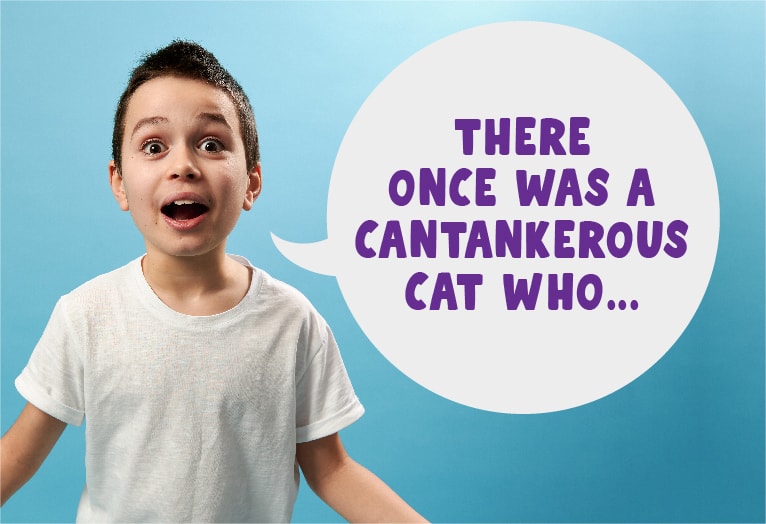
😼 Don’t know what the word cantankerous means? Check out ourvocabulary-building picture book about a cute yet cantankerous cat named Carl!
2. Adjectives Add Awesomeness
Adjectives are a great way to make stories more interesting and engaging. That’s why I use this roll the dice story activity with my upper elementary students. They quickly learn the power of using adjectives to take their story writing to the next level.
In a small group setting, select one or more story cubes for students to concentrate on. A good starting point is to begin with one of the character dice.
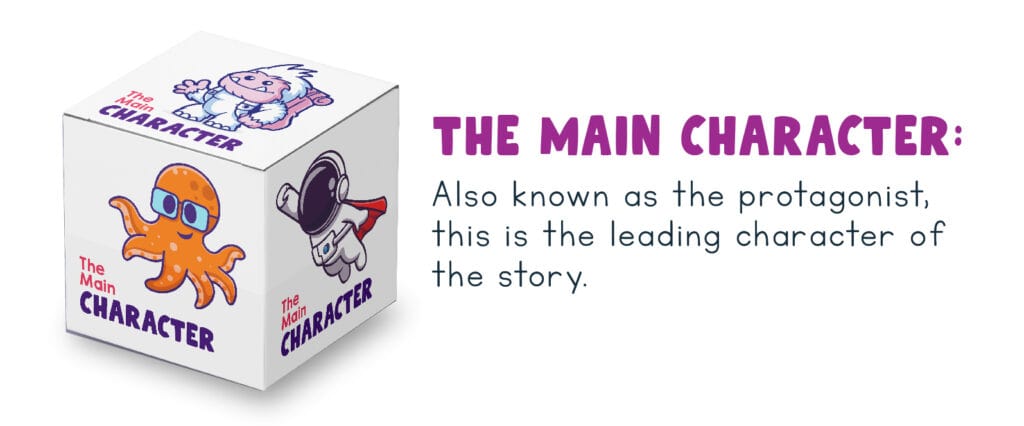
On their turn, students will roll the cube (or cubes) and come up with a list of adjectives to describe the image that they land on. This activity prompts them to consider descriptive words, employ their observation skills, and realize the variety of words they can utilize to enrich their stories.
With this activity, students can continue to develop their understanding of adjectives, an important part of speech, while having fun at the same time.
This roll a story game works well with some other parts of speech, too! Get your elementary learners to roll a cube and make a list of verbs, adverbs, or even nouns related to the image rolled. This will really get students thinking about the 8 parts of speech!
Share this parts of speech video with your students to reinforce adjectives:
3. Group Story Dice – Once Upon a Roll
With a small group of students, you’re going to start a story with, “Once upon a time…”
Have students sit in a circle and take turns rolling different story dice one at a time. Students need to write down (or draw) all of the story elements rolled, so they know what they are working with.
After each participant rolls a cube, the group collaborates to create one epic tale incorporating all the story elements rolled, starting with the classic phrase, “Once upon a time”.

Each student contributes uniquely to the story by rolling one of the story dice, ensuring everyone feels included in shaping the narrative.
With this roll a story activity, students learn how to work with others, express their ideas to a group, think creatively, and collaborate to write a story they feel a part of.
4. Improvise a Scene
Story dice for kids can be used to inspire a dramatic scene. Have a child roll all of the dice and then act out a scene that includes all of the resulting images.
You can do this in a group as well!
Have students huddle together to come up with a short skit that they will then act out in front of their peers. This is always a hit with my upper elementary students!
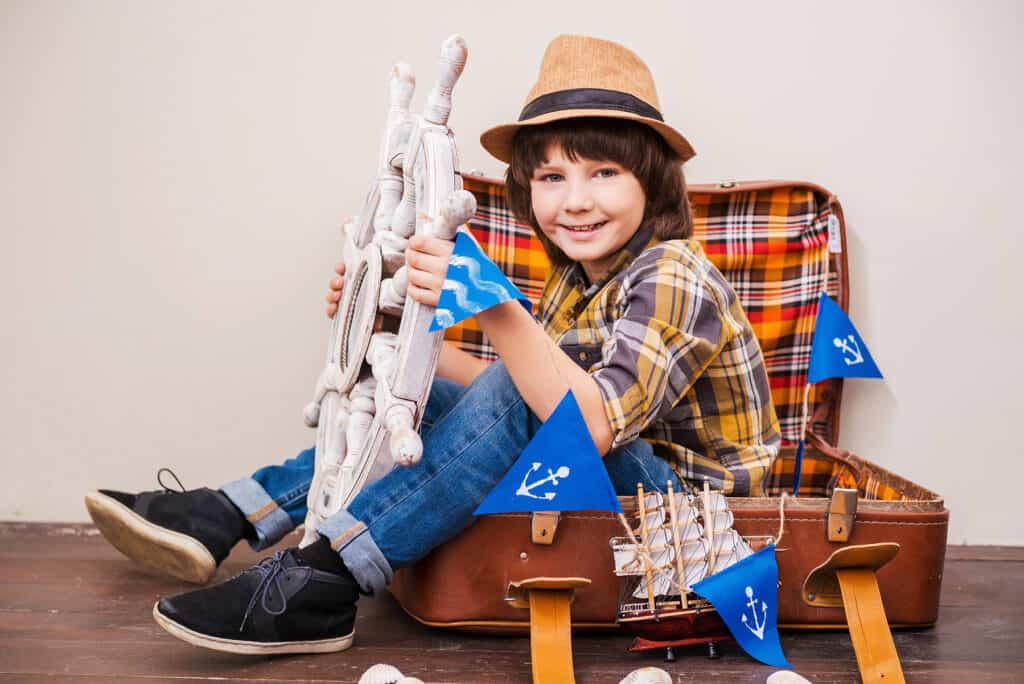
💡 Teacher Tip: Have props on hand!
Consider providing a box of props, old costumes, or miscellaneous items to enhance students’ dramatic scenes during improvisation activities. This will add fun and impact to their storytelling experience!
This is a fun activity that can help build confidence in children and get them working on their presentation skills in a fun way.

5. Write a Poem
Writing poetry isn’t as hard as students might think – especially when story dice are their muse!
Have your young storytellers gather 4 to 8 story dice and get them to give those cubes a good roll.
Ask students to take a moment to really look at the images and allow those images to speak to them and inspire a poem unlike any other!
Encourage students to get creative with their use of language, making sure to utilize figures of speech and colourful vocabulary. You’ll be amazed at the captivating poems your kids can create with story dice as their inspiration!
Share this video with your students to refresh their understanding of poetry:
6. Roll a Comic Strip or Graphic Novel
Let your storyteller’s imagination and creativity run wild while they use the story telling dice to create their own comic strip or graphic novel.
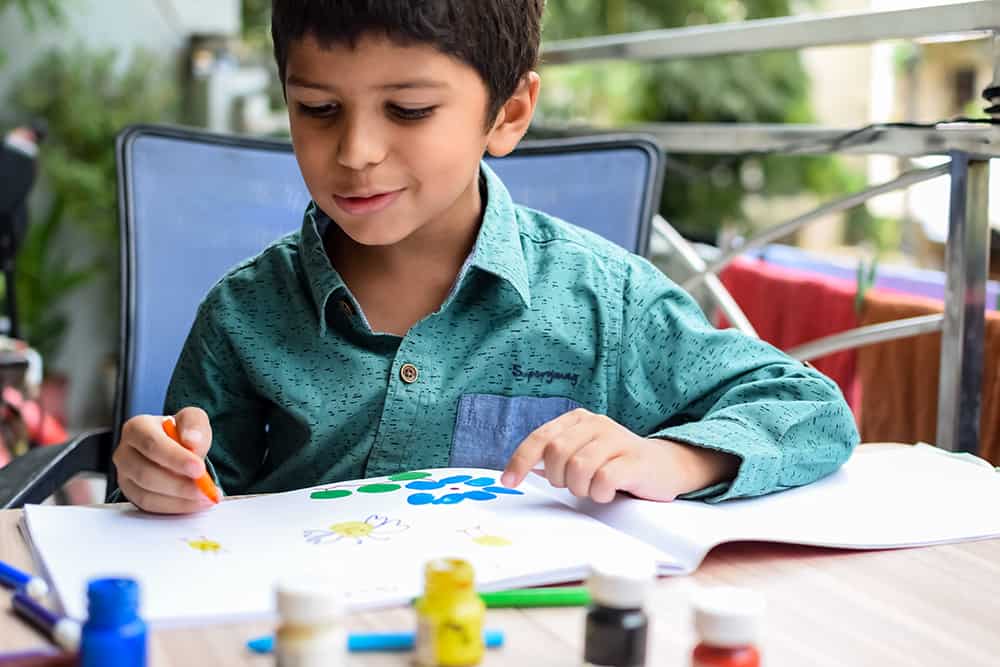
Students will choose 4 to 6 of the story dice to roll. From there, challenge them to draw 2 to 4 frames of sequential panels in true comic book fashion. Encourage them to storyboard their story from the dice combination they rolled.
The video below is a helpful tool to guide students on how to approach making a comic book strip. Check it out!
7. Tell a Story Through a Drawing
Bring storytime to life with a story-telling game that you can draw out! Drawing can be a fun and powerful way to tell stories, evoke emotions, and help spark creativity.
Gather your Roll a Story dice (use all 8 story dice or pick and choose a few!) and get students rolling! Based on the images rolled, students will create a visual story.
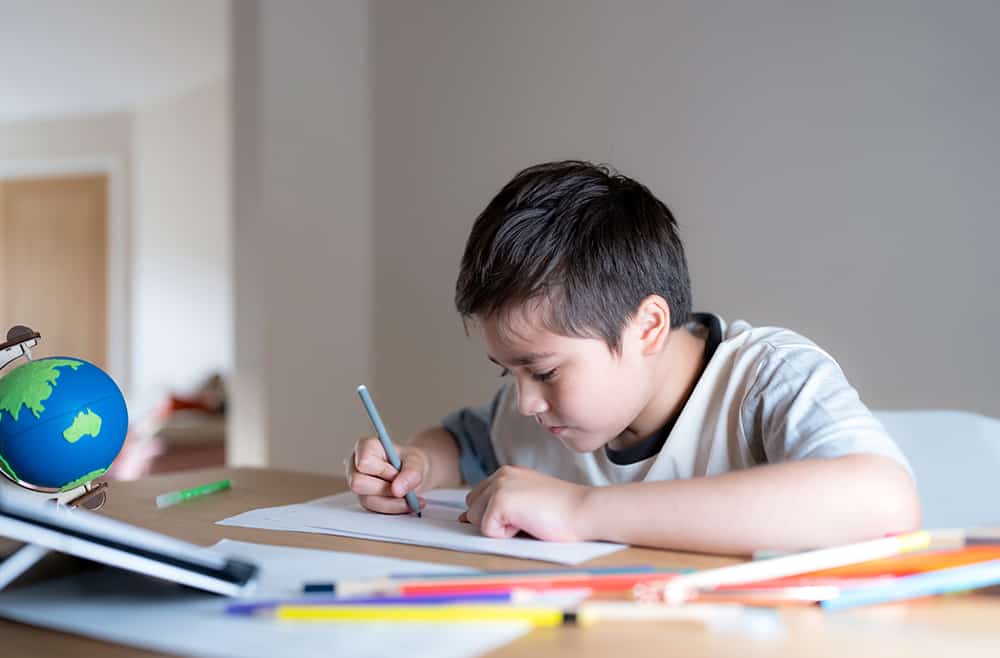
Details should be added to the drawings so that a vivid scene is created.
Whether it be an alligator walking through an outdoor landscape or a person wearing vegetables, they can let their imaginations run free as they bring the scene to life.
This is sure to be an entertaining and artistic roll a story game experience for all involved!
8. Write a Commercial for an Object from the Object Cube
In this activity, students will write a commercial script that highlights the unique aspects of an object rolled from the object cube.
The object cube outlines 6 different things that an author would want a reader to notice in a story. In this activity though, students will advertise the object rolled and identify its important features in a persuasive 30-second commercial.
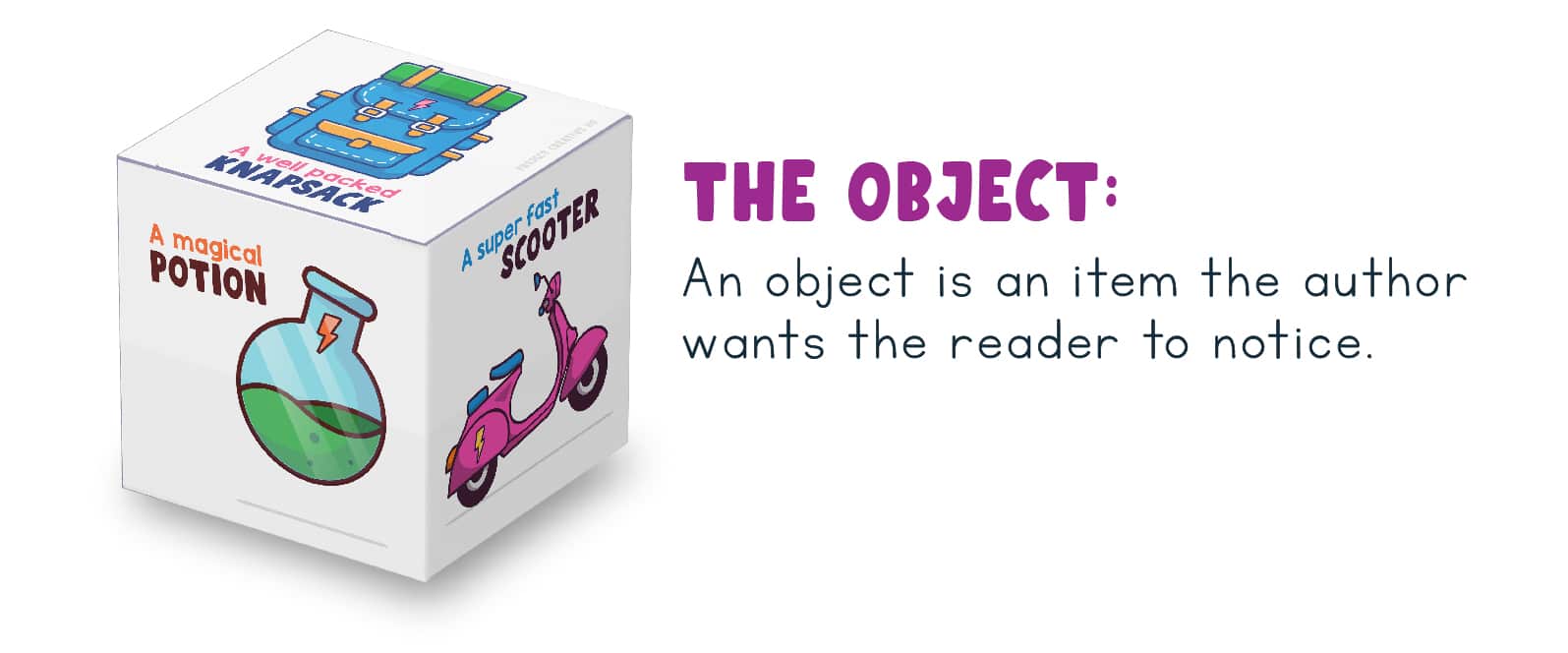
Whether it be a magical potion, a well-packed knapsack, or even someone’s laptop – students will let their creativity shine through while they make a creative commercial showcasing the awesomeness of a specific object.
Once the script has been written, students can act it out, film a video, or even write a jingle. There are so many ways to get creative with this activity.
Did you know that story dice for kids could be this much fun?
9. Detailed Character Development
Get your learners to get to know their story characters! Have your students roll the 3 character dice and develop each character with detail.
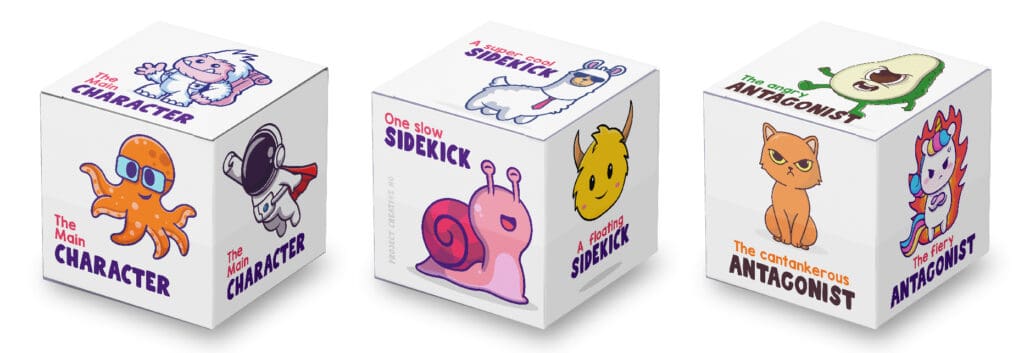
Find it on Etsy and Teachers Pay Teachers!
Have students take some time to think about each of the characters: the main character, sidekick, and antagonist. What was their childhood like? Do they have any pets or do they enjoy any hobbies? All these little details are important and will add so much depth to a story!
Encourage your students to give their story characters a personality that everyone can enjoy.
10. A Day In the Life Of a Character
Try something a bit different with your story dice! Have students roll one of the character story dice and write about what a day in the life of that character might be like. From waking up to bedtime routines, students can explore the character’s actions, thoughts, and emotions throughout the day.

To enhance the narrative, add another layer by incorporating the setting cube. By rolling the setting cube alongside the character, students can vividly describe the character’s daily experiences within a specific location.
Whether it’s a bustling city, an old castle, or an underwater oasis, the setting adds depth and context to the character’s journey, sparking imagination and creativity in storytelling sessions.
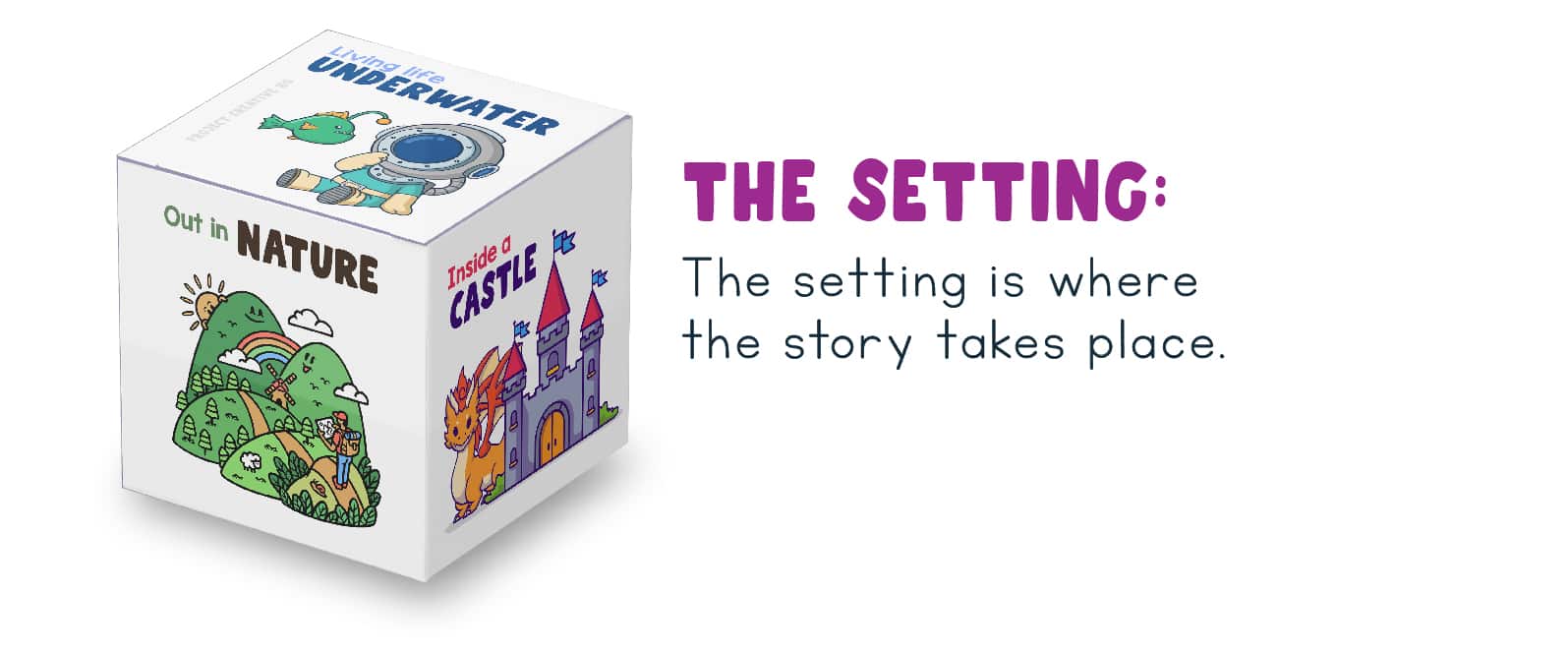
Get ready to see storytelling magic happen as students explore characters and settings brought to life by rolling the story dice!
11. A Tale of Two (or Three or Four) Stories
Use the mood cube and the time period cube to write the same story, but with different emotions.
This exercise encourages students to explore how varying emotions can influence the tone and direction of their narratives, fostering a deeper understanding of storytelling dynamics.
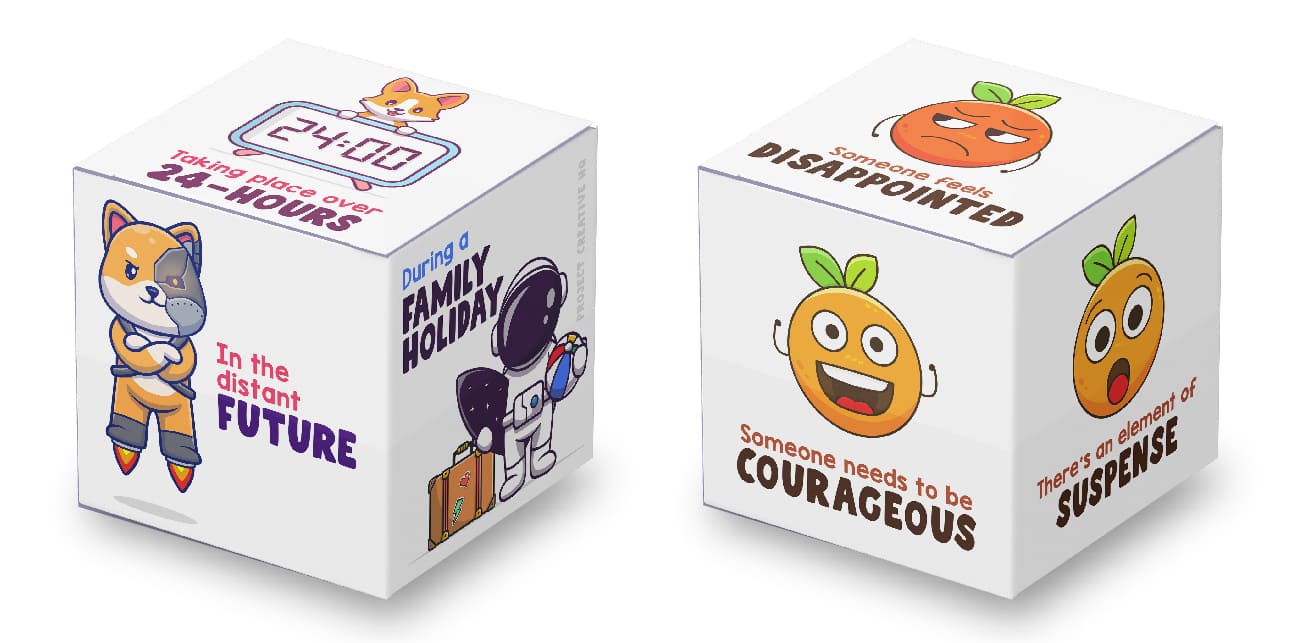
Students will first roll the time period cube to determine when their stories will take place, setting the stage for their imaginative explorations.
After determining the time period, they will roll the mood cube 2, 3, or even 4 times and take note of the moods they rolled.
The objective is to craft multiple stories using the same time period but exploring various emotional perspectives as dictated by the mood dice.
For example, if a student rolls the time period ‘in the distant future’ and the moods ‘courageous’, ‘suspense’, and ‘disappointed’ then they need to write three stories set in the distant future, but each story will be different because they would be writing with different moods in mind.
How different will the stories be???
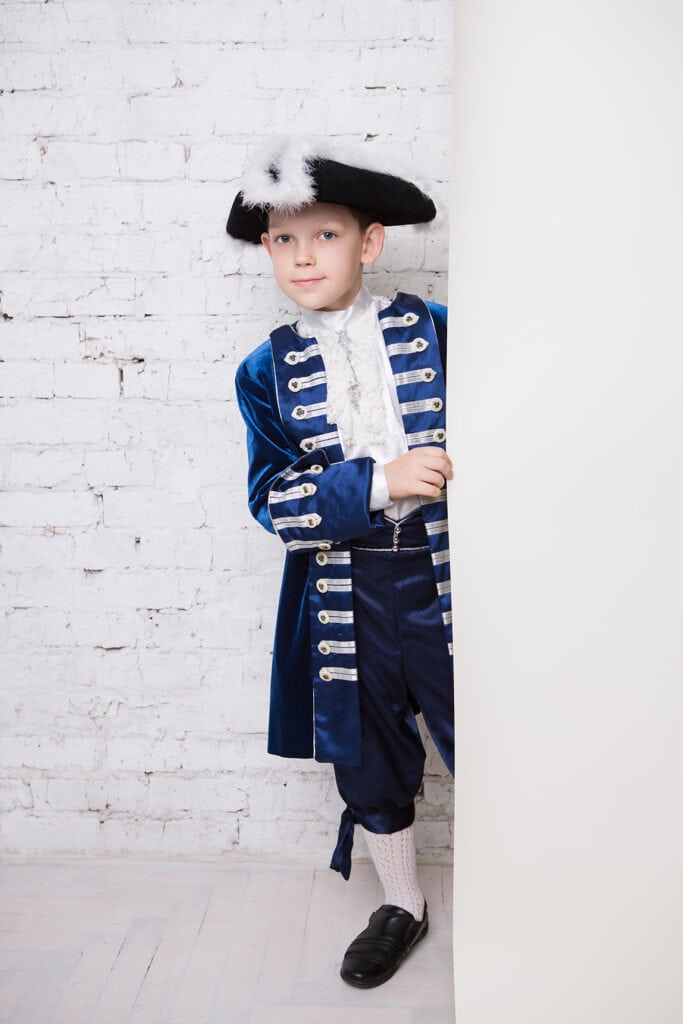
Share this insightful story with your students to inspire more great stories and explore different feelings and perspectives!
Boost Writing Confidence with Our Story Dice
Many kids who want to write don’t know where to begin, and they might not realize how good their writing can be. You might have students like this, or you might have felt this way yourself!
Cue our story dice, Roll a Story Dice Game. A great classroom activity for getting kids excited about writing.
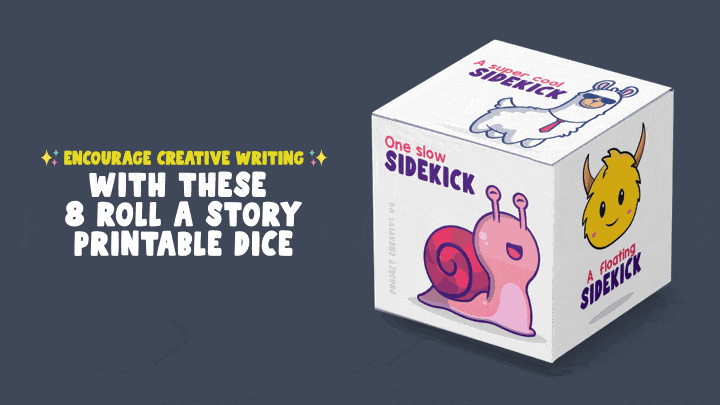
From my reluctant writers and disinterested readers to my eccentric writers and inquisitive readers, these story dice always generate an epic story, and often many laughs, from all of my upper elementary students.
Everyone benefits from this story dice game as teachable moments often pop up. It’s learning in disguise in action!
Our story dice game is not only easy to assemble but also provides endless opportunities for creative writing. With unique prompts each time they are rolled, our dice build confidence in kids about their writing and expand their vocabulary.
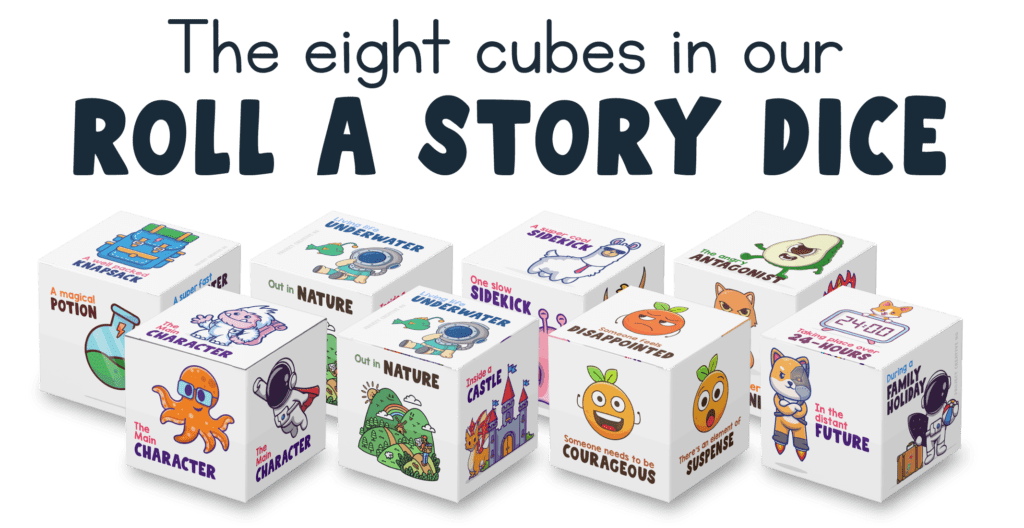
Find our story dice on Etsy and Teachers Pay Teachers!
This engaging game simplifies the process of writing fiction stories. By rolling the dice, students can select elements for their stories, making the storytelling process both enjoyable and accessible.
The game includes nets to construct 8 distinct dice, each featuring captivating images that represent various story elements such as setting, main character, time period, and mood. These visually stimulating images spark imagination and encourage students to explore different narrative possibilities.
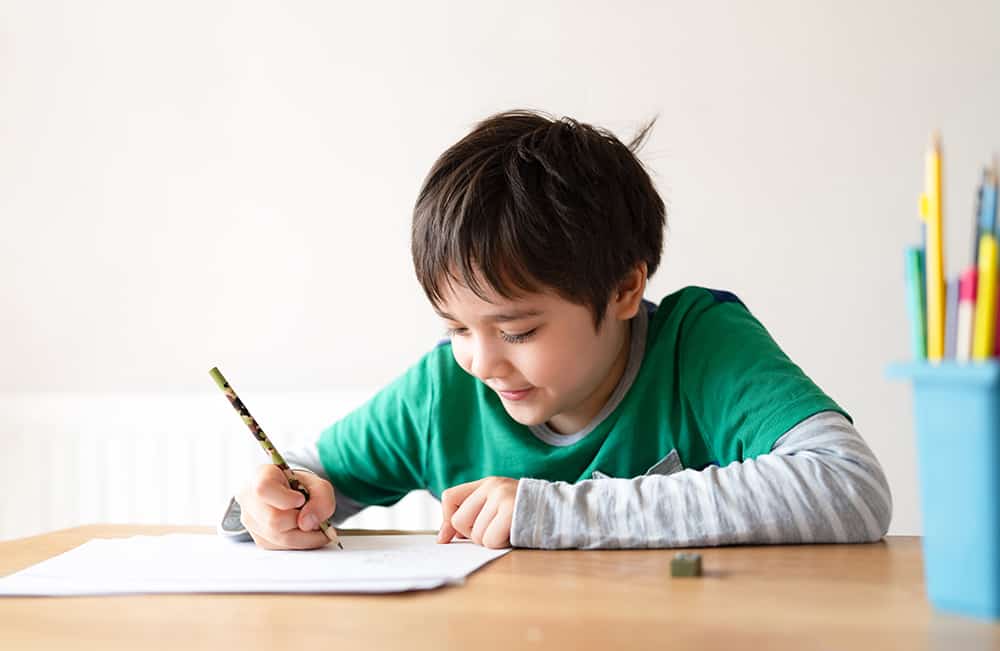
Tips for Using Our Story Dice with Kids:
🎲 Begin by rolling one story dice at a time to focus on specific story elements like characters, settings, or moods.
🎲 Choose the dice you want to focus on for a lesson or have students choose which of the dice they would like to roll and write about.
🎲 Use the dice in group settings to promote teamwork and shared storytelling experiences.
🎲 Incorporate the dice into different subjects and activities beyond language arts, such as history or art.
🎲 Keep students entertained during rainy days or indoor recess by bringing out the story dice for creative storytelling sessions.
🎲 Consider gifting a set of story dice to students as a fun and educational class gift, encouraging storytelling and imaginative play at home.
It’s really up to you! You know your students best so use the dice that make sense for your learners, support what they need to work on, and bring their learning to the next level!
The Wrap-Up: The Best Story Dice
By using story dice in many different ways, you’ll help make your elementary students excited about writing and spark new ideas within them.
Our story dice offer an intriguing avenue for students to delve into diverse story types, characters, and captivating narratives.
Don’t hesitate!


Go ahead and shake things up in your classroom and get those story dice rolling! Who knows? You might just uncover some future authors among your students.
Keep your kids busy learning with the educational activities in these blogs:
13 Engaging Vocabulary Development Activities for Elementary Kids
Rebus Puzzles for Kids: A Comprehensive Riddle-Solving Guide
31 Fun Summer Reading Activities Elementary Students Will Love
The Best Neighborhood Walk Scavenger Hunt and 13 Different Ways to Use It
8 Easy Rebus Puzzles with Answers
27 Educational YouTube Channels to Prevent Summer Learning Loss









